THIS Is What Dune First Looked Like
The Original Dune World and Prophet of Dune Pulp Artwork
I love Dune. I love the story. I love the complexity of the mentat, Mahdi, Lisan al Gaib, Kwisatz Haderach, Emperor Paul-Muad’dib-victim-of-circumstance-Atreides. The philosophical tension between prescience and volition and the difficult ethical decisions like sullying one’s conscience vs. carrying humanity through a golden path towards flourishing. I love the ecology turned full planetology and the sandworms!!!
(this is a very long post so make sure you click “view entire message” or you won't see the whole thing)
There’s a lot to love in the actual plot, philosophy, politics, etc., but there’s also a whole visual world of art that came to us out of the desert on the back of Dune, the best of which was drawn and painted by John Schoenherr, the man who Frank Herbert said was the only person to ever actually visit Arrakis. Now, obviously Herbert said this because of how clearly Schoenherr had read the story and depicted Herbert’s vision through illustrations and paintings.
Many fans of Dune will be familiar with John Schoenherr’s oil paintings of Dune since they’ve been used for the original 1965 Chilton 1st edition of Dune as well as other editions like the SF Master Works edition.
Fewer Dune fans will have seen John Schoenherr’s unique illustrations which he created for The Illustrated Dune.
But fewer still have seen the original illustrations that Schoenherr did for the first ever appearance of Dune, that is, its eight-part serialization in the SF magazine Analog: Science Fiction/Science Fact, which was formerly known as Astounding Stories of Super-Science. That’s right! Dune was first published as a two serials, “Dune World” which took place in Analog from December 1963 - February 1964, and “The Prophet of Dune” which took place in Analog from January 1965 - May 1965. And… each issue had original Dune artwork by the legend himself, John Schoenherr!
Okay, a quick excursus for the super nerds that just have to know, and I’m pulling a lot of this from Ryan Britt’s The Spice Must Flow. Dune World = pt. 1 of the novel Dune, which is called “Dune” and Prophet of Dune = pts. 2 & 3 of the novel Dune, called “Muad’dib” and “The Prophet” respectively.
Now you may ask “are there any differences between the Analog serialization and the Dune we now have in novel form?” Well, the answer is “yes”, but there aren’t many differences. Various swears that appear in Dune were omitted in Analog because of of the editors just didn’t like swears and would take it upon herself to remove them (e.g. the Reverend Mother’s “Damn that Jessica!” first appeared as just “that Jessica”).1 But there is a bit more variance than just these omitted swears. Frank Herbert had to recount the differences for his agent, Lurton Blassingame, for legal purposes and here’s what he says the differences amount to:
I wrote an extensive recapitulation for the beginning of Prophet which has been edited out of the Chilton book versions—about 5,000 words in all… I also expanded the Fenring role and wrote several new chapter-precedes for the Chilton book—see page 84 of the book; also pgs. 163, 209, 210, 237, 271, 293. The map of course is new and the four appendices and the glossary… this rounds off at 15,300 words.2
So originally, what we now have as ‘Dune’ was a two-part story comprised of Dune World and The Prophet of Dune which were both serialized across eight volumes of Analog, each of which only costed fifty cents! That’s eight bucks for the full story! This figure would be much more significant if you know how much I paid more my copies (way more than eight bucks!).
But while the Prophet of Dune serialization in Analog didn’t conclude until May 1965, the story was already completed by November of 1963 and Herbert and Blassingame, had already begun shopping the story around to different publishers. Ultimately, twenty-three publishers turned it down in total!3 There’s a lesson here about persistence, especially given the fact that Dune went on to win both the Hugo and the Nebula prizes which were (and may still be but it probably depends on who you ask) the most prestigious awards in SF.
The full novel (again comprised of Dune World and The Prophet of Dune) was finally picked up by Chilton Books, a publisher who mostly published car-repair manuals, thanks to “a Lord of the Rings megafan”4 named Sterling E. Lanier, who was in charge of acquisitions there at Chilton. Lanier was an Analog subscriber and had read Dune World and probably some of The Prophet of Dune by the time he reached out to Blassingame to see about publishing Dune with Chilton. Lanier loved LOTR and felt that Dune was a kindred spirit: Dune is SF what LOTR is to fantasy. Indeed, many others have felt this way including Arthur C. Clarke who has that famous quote on the back of most editions of Dune “I know of nothing comparable to it except Lord of the Rings”. Lanier even sent a copy to J.R.R. Tolkien. Tolkien read it and disliked it “with some intensity” which he wrote in a letter to John Bush the following year after Bush sent him yet another copy of Dune to read.
found here: Tolkien vs. Herbert
Lanier was the man though. He, in a very real sense, made Dune happen. He reached out to get it published, risking his carrier (they printed car-repair manuals!) but he’s also responsible for the title. Apparently, Herbert was going to go with “Dune World” like the title of his first serial, but it was Lanier who suggested that “Dune” would play better. He was definitely right (even though all of my hipster instincts make me want to push for Dune World).
Okay, that was some excursus! What I really wanted to do with this post is show you the beautiful artwork that accompanied the original story of Dune. It’s a shame that so few people have seen these, especially since Herbert himself held Schoenherr’s work in such high regard:
Herbert loved all the illustrations, writing to Campbell, “Frequently, I have to ask myself if the artist was actually illustrating the story his work accompanied. Not so with John Schoenherr…[his art] caught the tremendous power and beauty [of] the ‘Dune mood’ I struggled so hard to create.5
So enough from me, let’s make with the art! (I hope I’m not stepping on any copyright here). THIS is what Arrakis first looked like:
Dr. Wellington Yueh
The Shadout Mapes presenting the crysknife to Lady Jessica
Paul and the hunter-seeker
Leto had a mohawk lol.
Leto and the boys looking at a spice harvester 3D image.
Stilgar after honoring Duke Leto with his water, Gurney close at hand.
Paul contemplating thopters.
an ornithopter.
where the Atreides live in Arrakeen (I think).
waylaying Leto (?)
Leto finding bodies in the hallway, discovering that they’re under attack.
The Baron and Piter
Leto bound, the Baron looks on.
Piter and Jessica.
Paul and Jessica’s escape. Cliffhanger ending to Dune World for almost a year before Prophet of Dune!
Jessica and Paul.
Fremen violence against Sardaukar.
The world’s first glimpse of a sandworm!!!!!!
Liet-Kynes left to die in the desert before the pre-spice blow.
Nighttime. Before Paul kills Jamis.
The most beautiful cover ever? For me, it’s a toss up between this and Bruce Pennington’s New English Library cover of Dune (below)
The Baron and Feyd-Rautha.
Stilgar and Paul’s crew returning to Sietch Tabr.
Analog switches back to the smaller size of magazine for parts 4 and 5 of The Prophet of Dune.
Gurney and Paul reunited.
Gurney threatens Jessica in front of Paul.
Alia kills the Baron with her gom jabbar while the emperor sits on his thrown.
Boom!
Aren’t those amazing! Such a shame they’re locked away inside old pulp magazines instead of being included with the novel itself!
I’ve also collected the pulp serializations of Dune Messiah and Children of Dune. Messiah was published in Galaxy instead of Analog because the editor, John W. Campbell liked supermen and Herbert was seeking to subvert the superman motif. As such, there are far less illustrations accompanying Dune Messiah. But Children of Dune is back in Analog with lots of great Schoenherr illustrations! So if you guys want to see those too, let me know in the comments here and I’ll consider making posts for both of those serializations. I’m also up for sharing the pictures from The Illustrated Dune, I have both editions and there are a couple different paintings between the two.
I didn’t want to make this a paid post because that might really get me in trouble with copyright stuff but if you liked this info and my research then help me do more and become a paid subscriber, that would be amazing!
Ryan Britt, The Spice Must Flow: The Story of Dune, from Cult Novels to Visionary Sci-Fi Movies, 69-70.
ibid., 68.
ibid., 65.
ibid., 66.
ibid., 75.







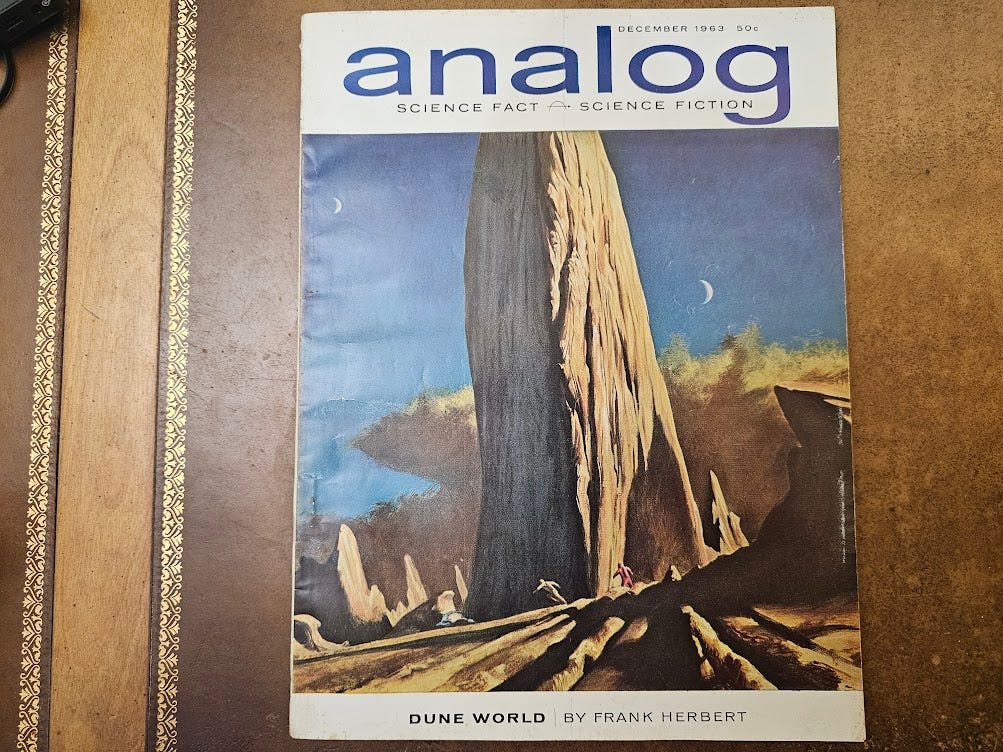
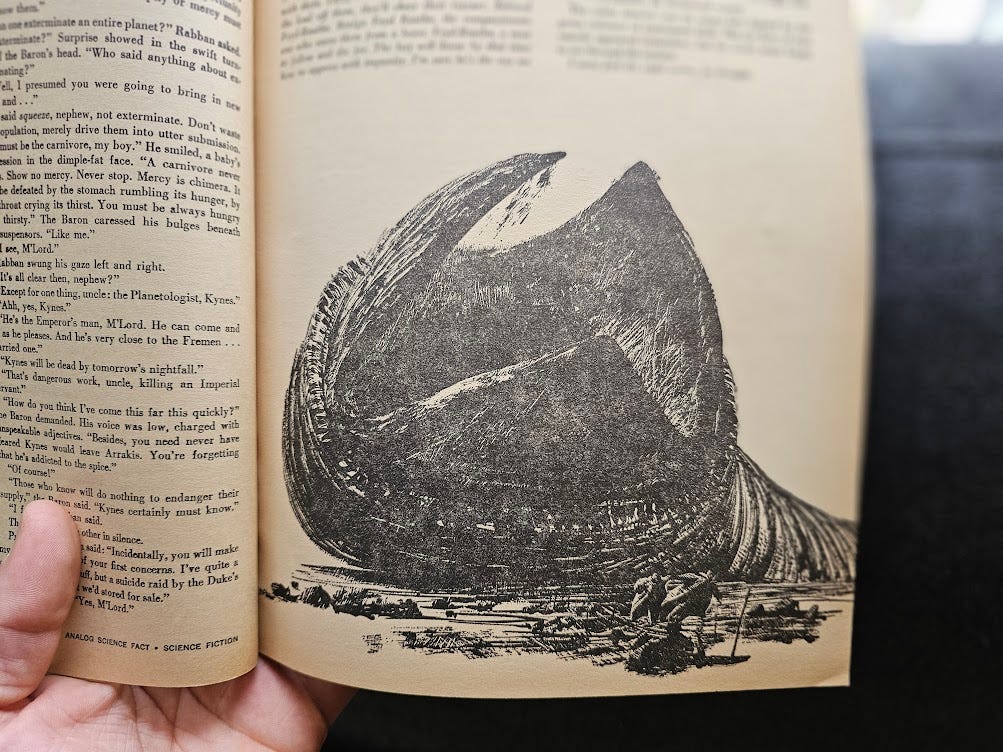

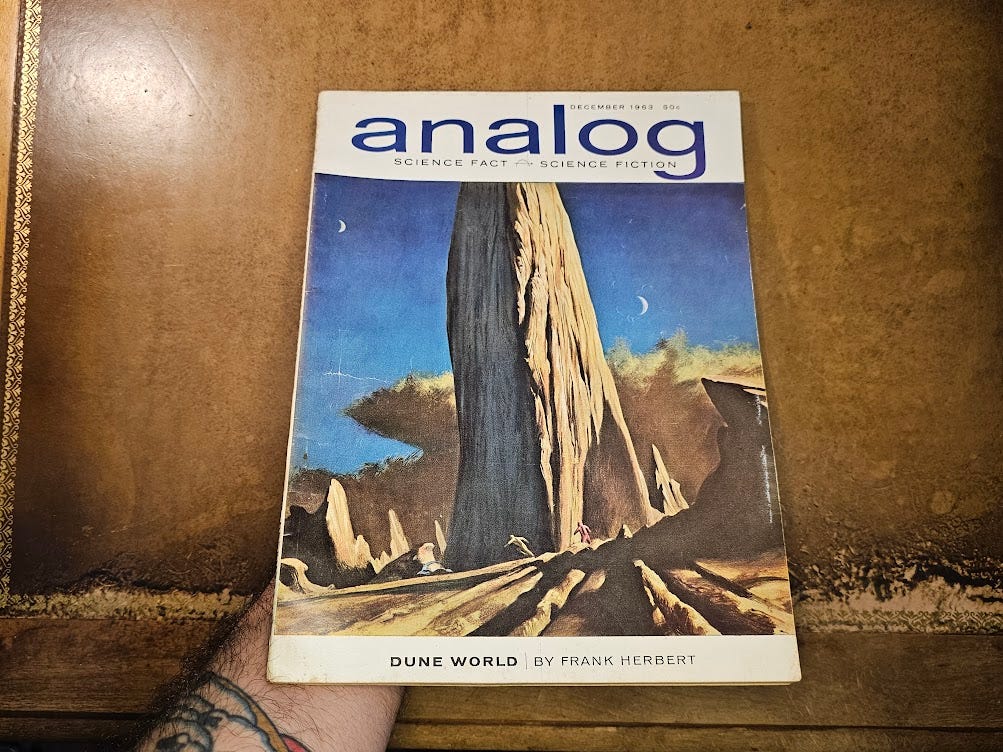

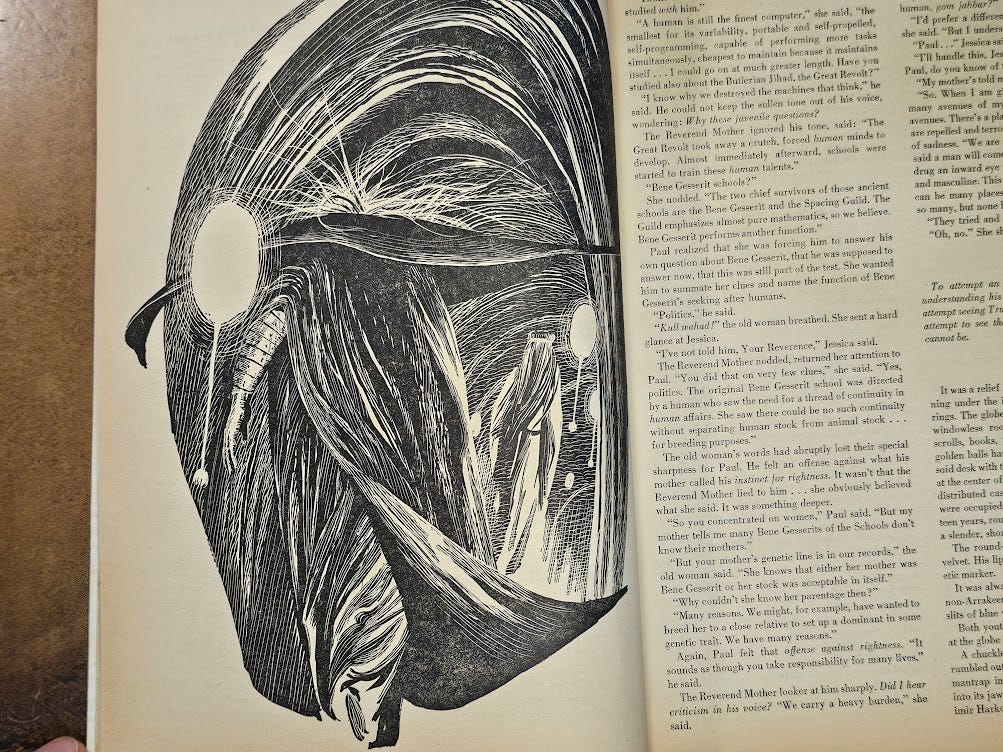
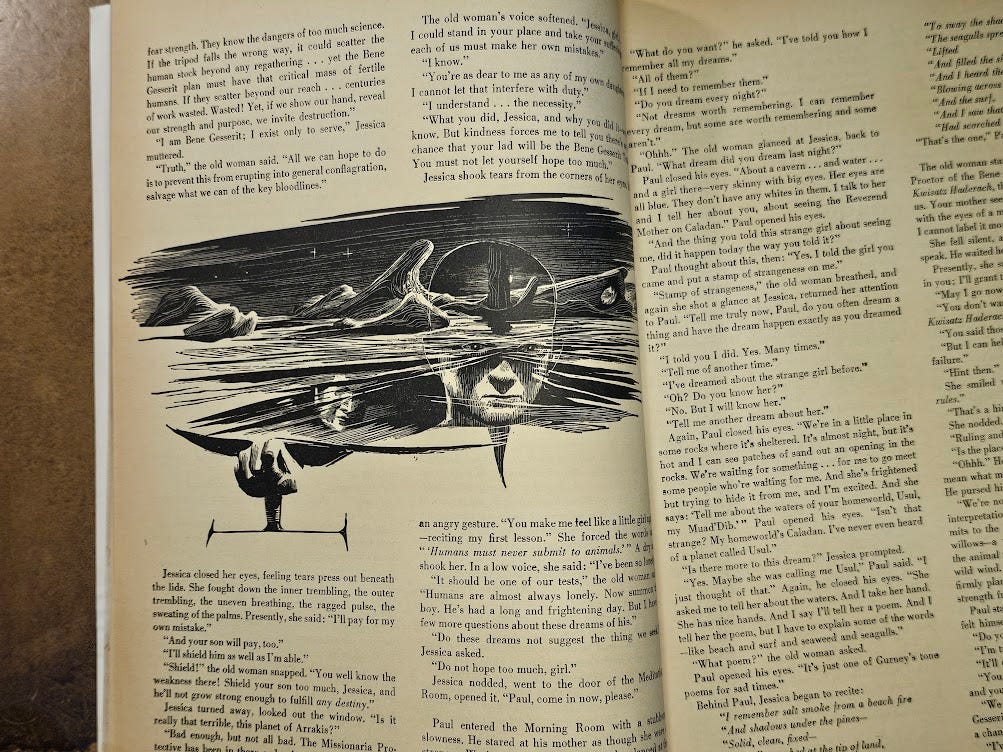
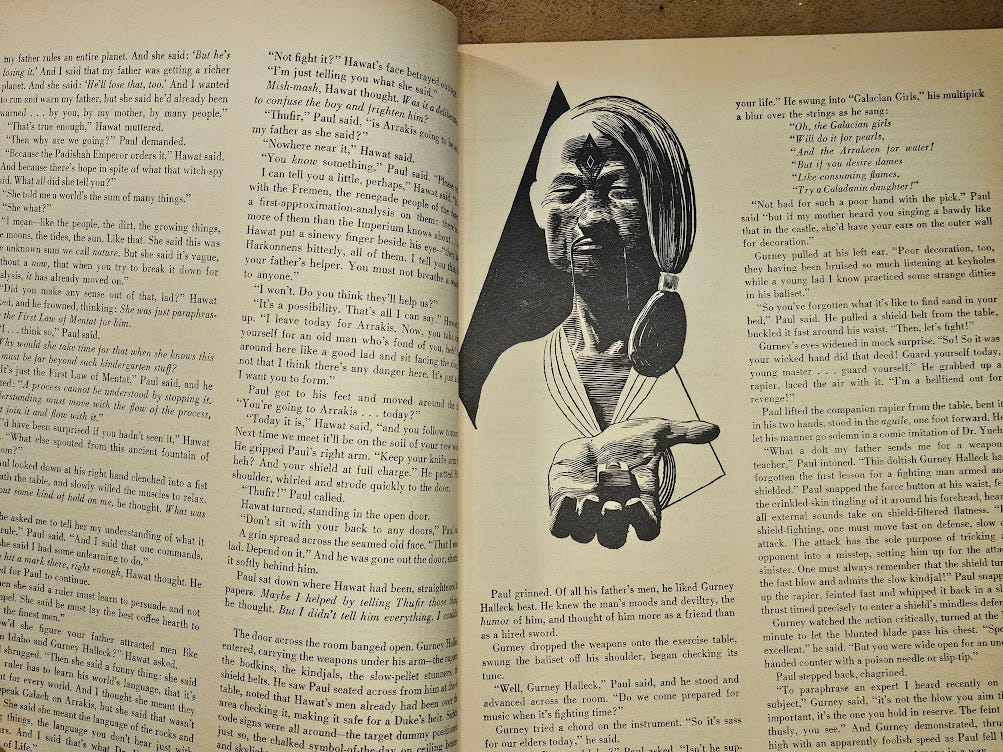

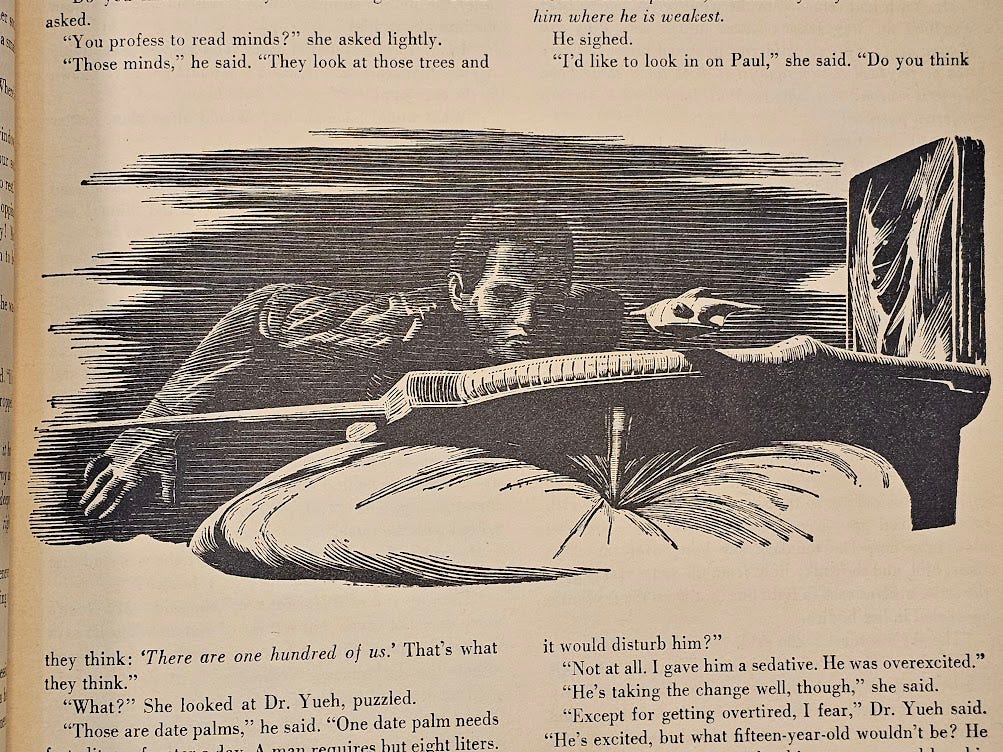
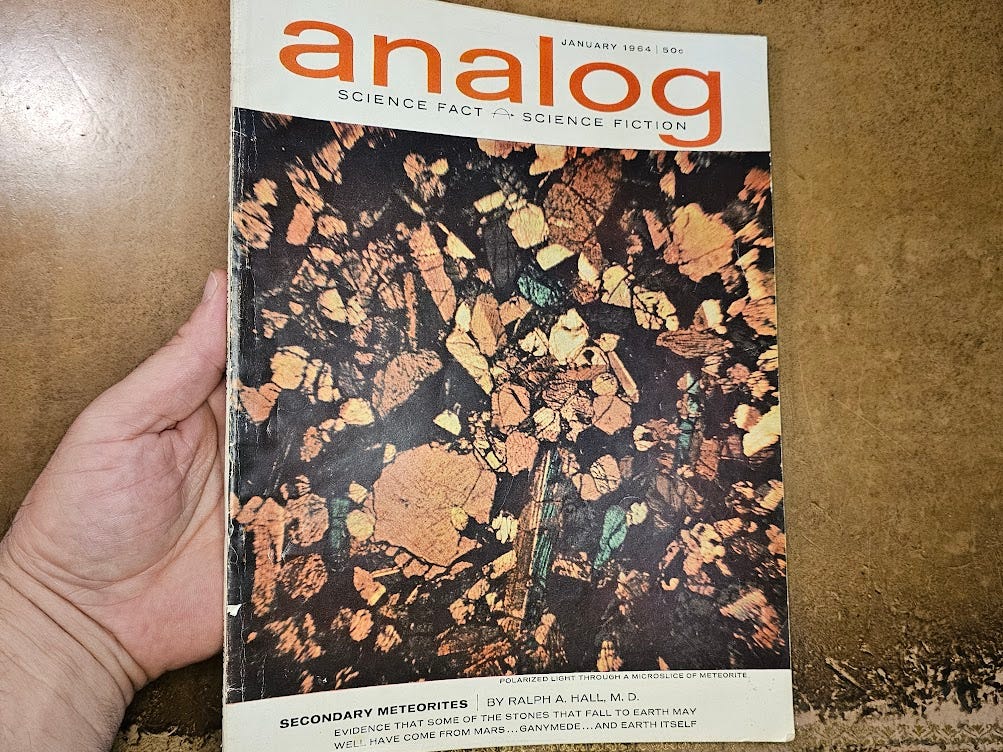


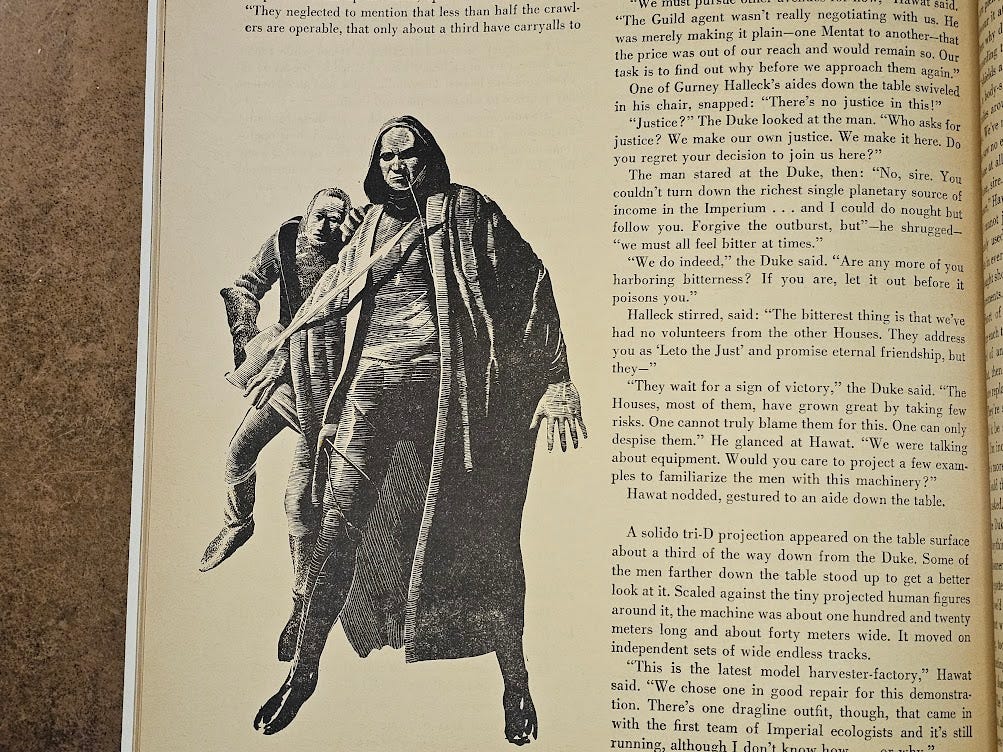






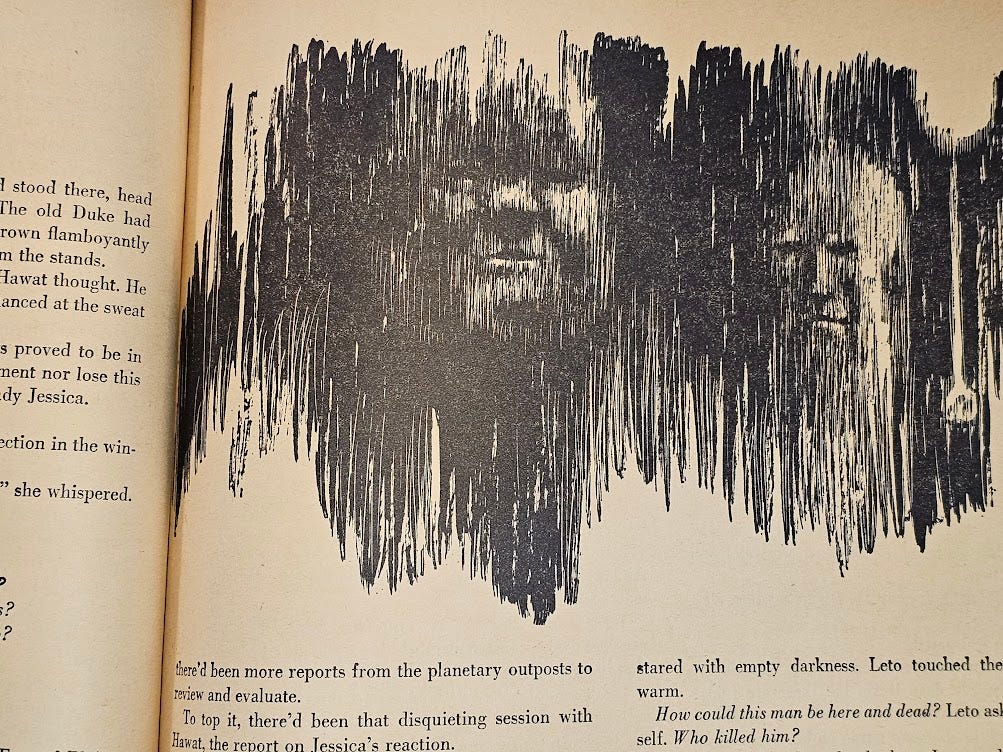

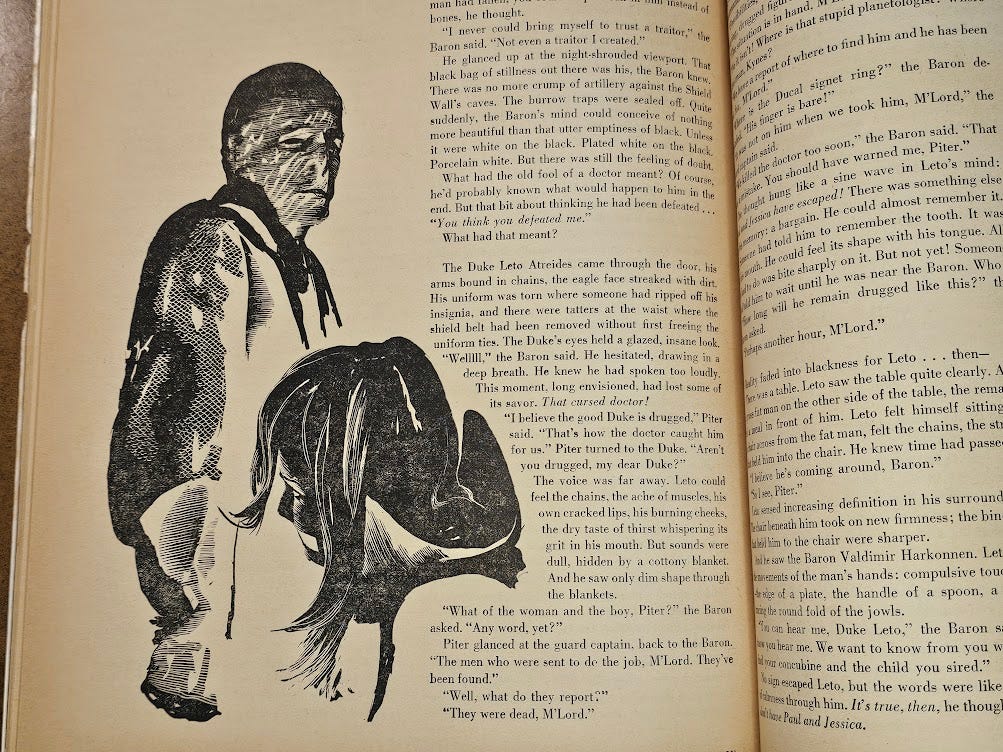
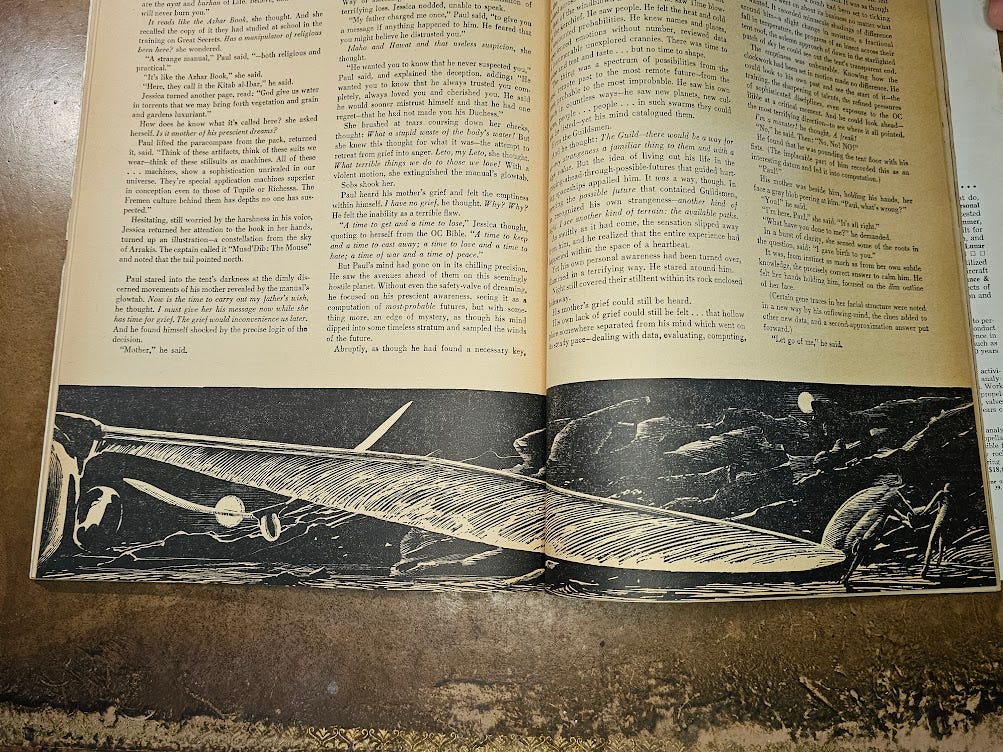
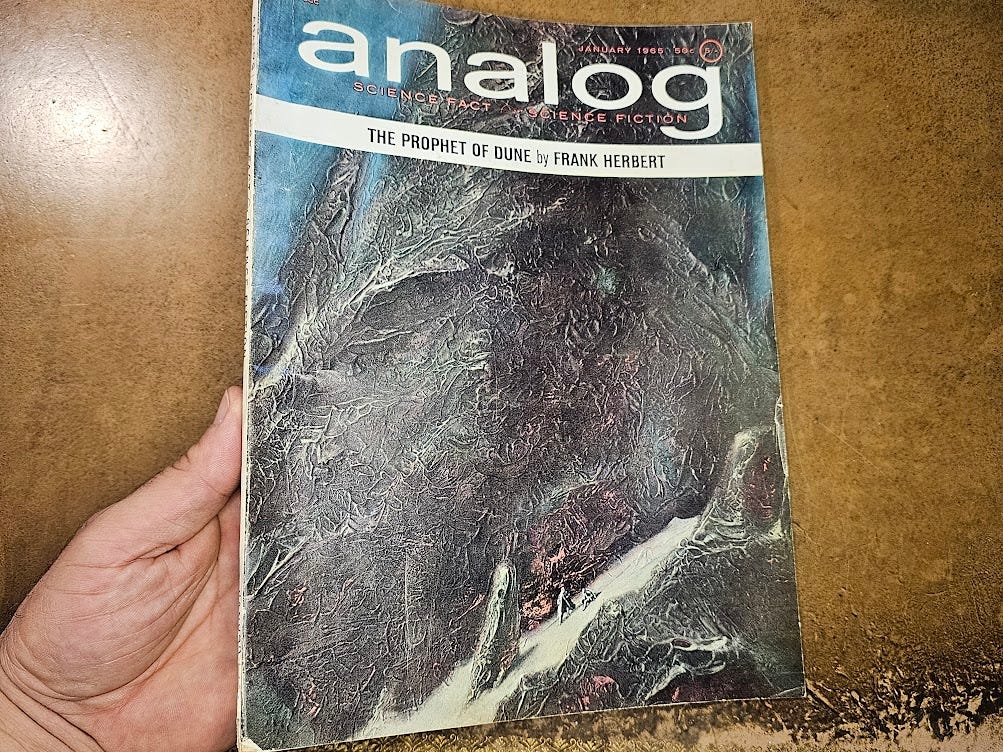
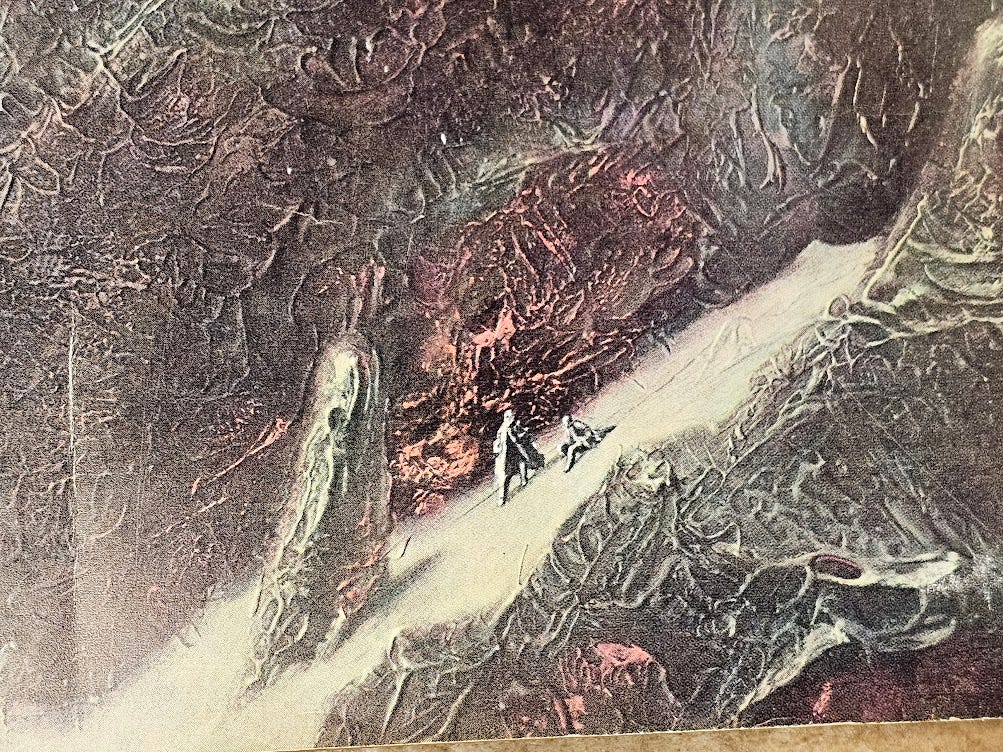

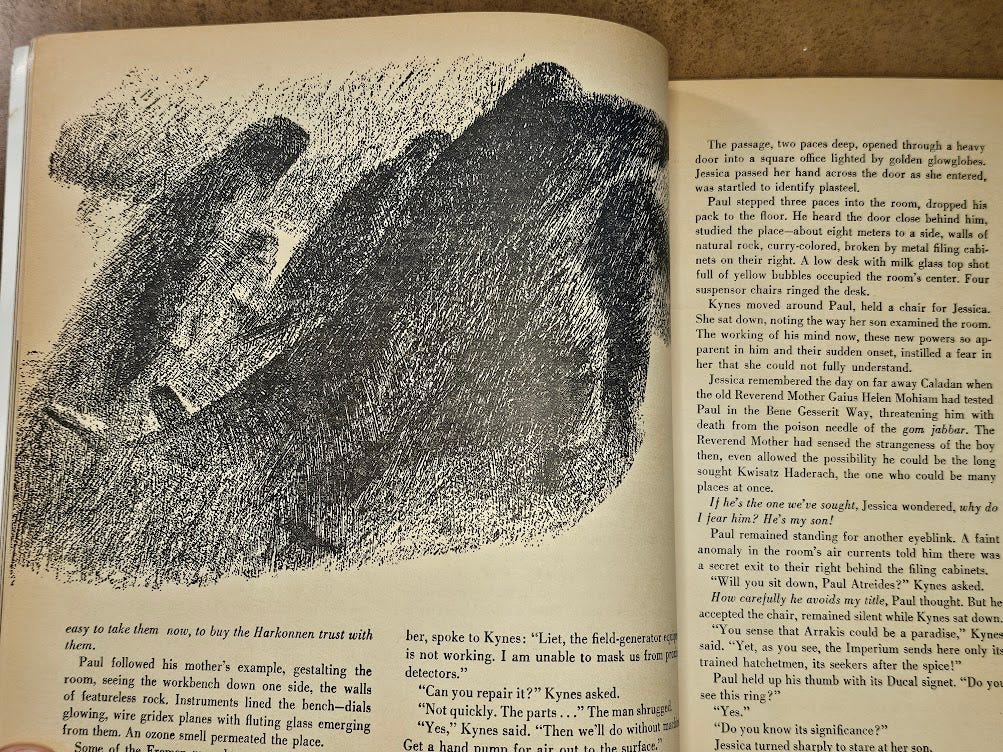

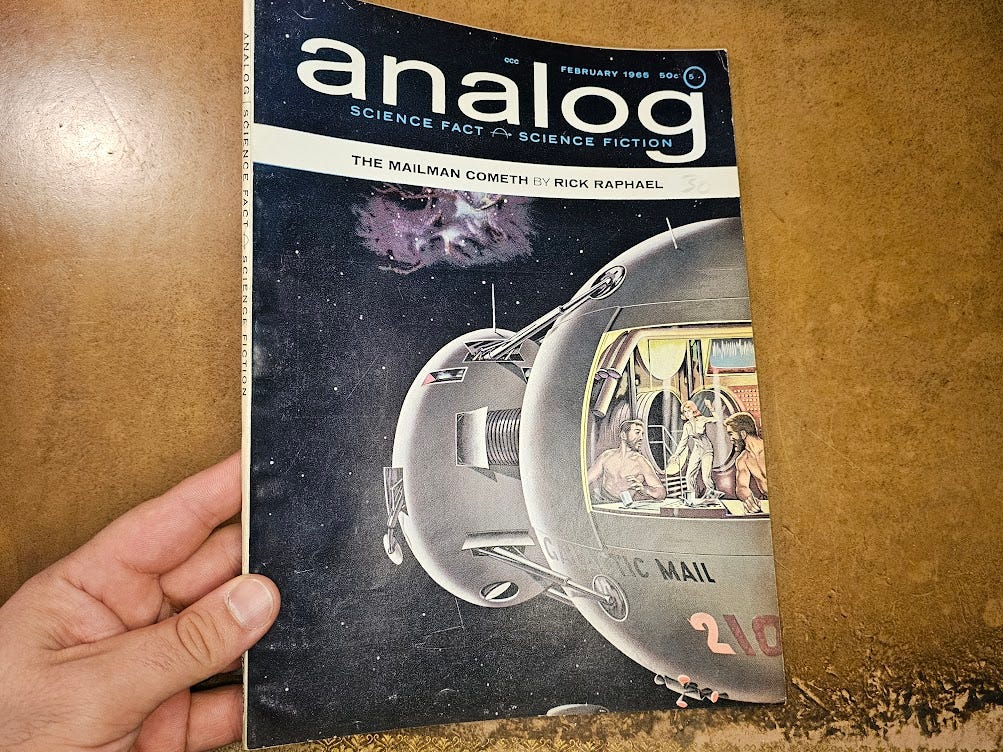

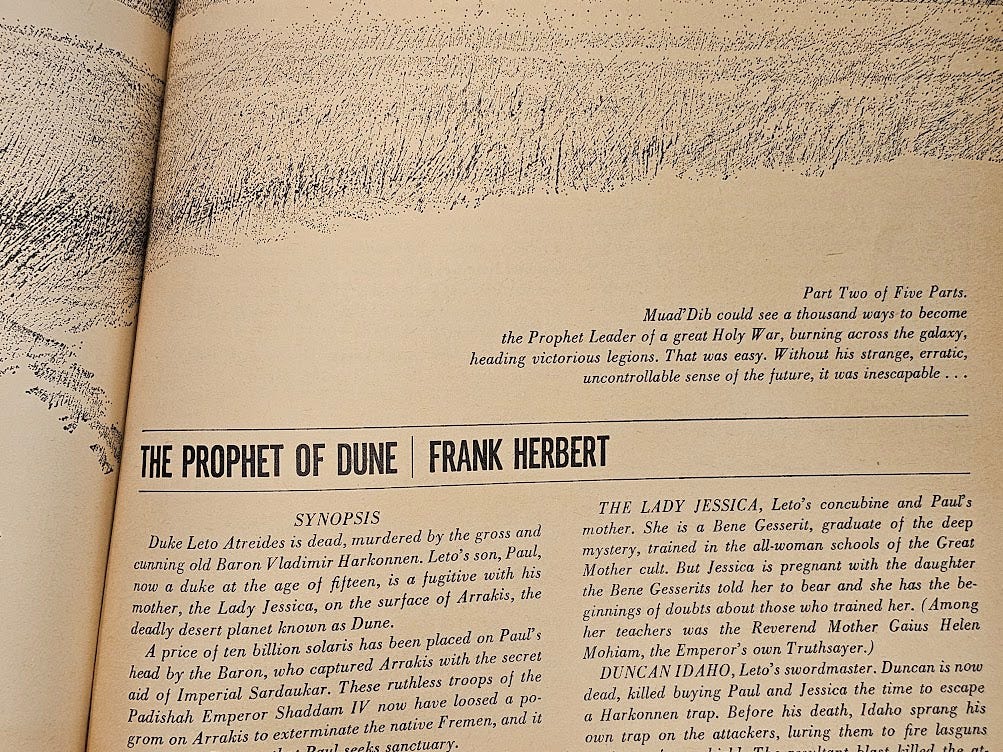


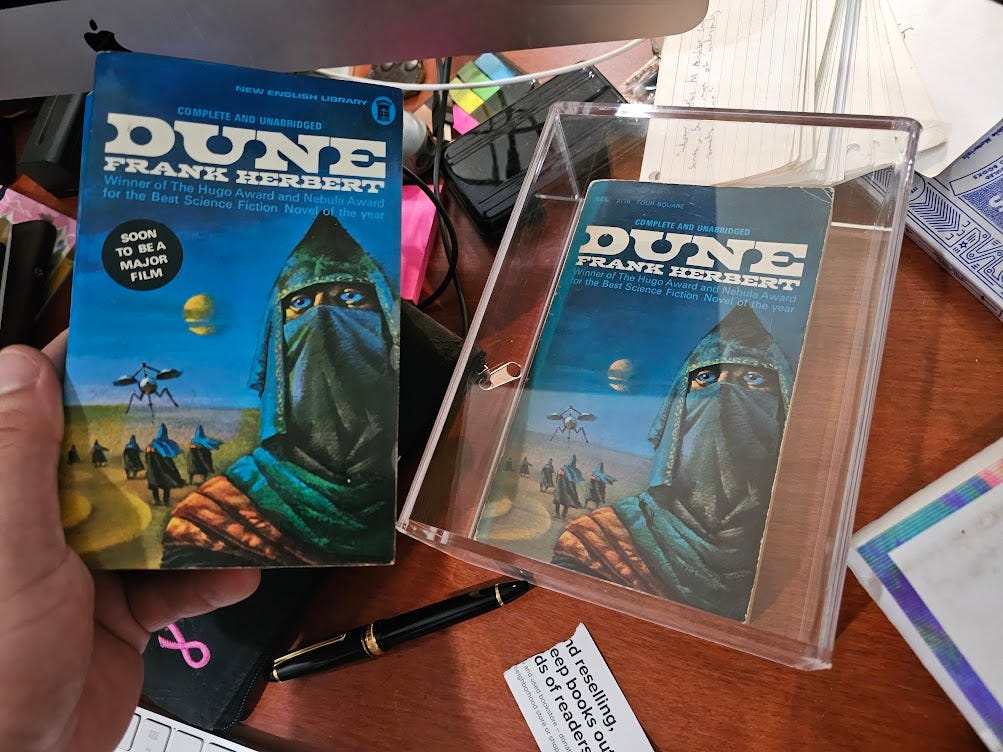
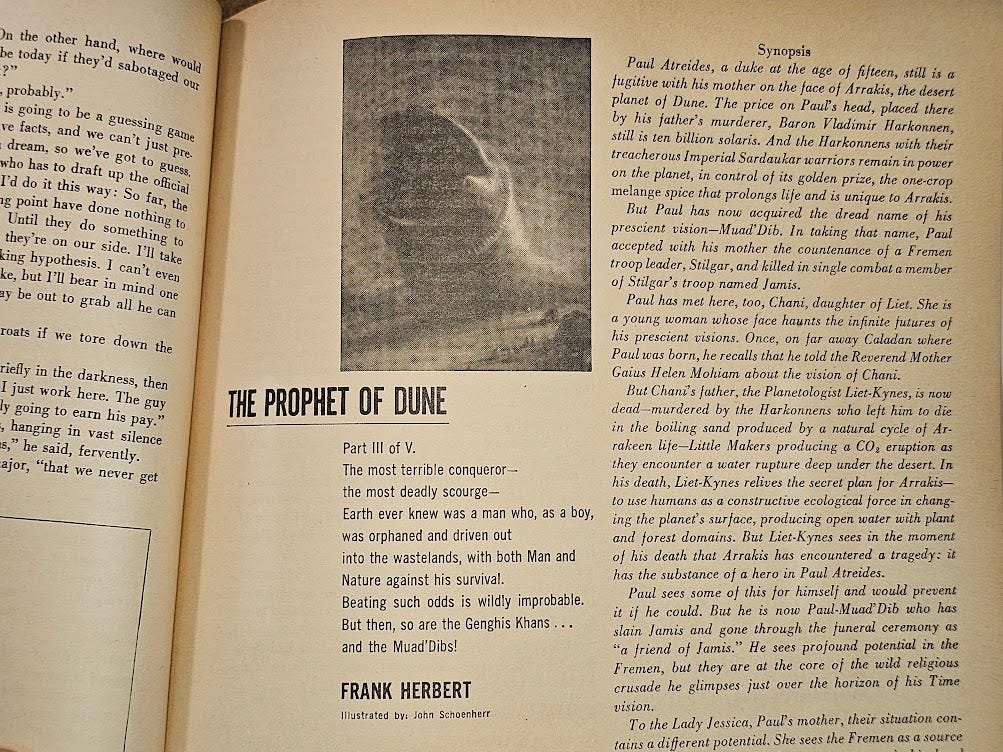





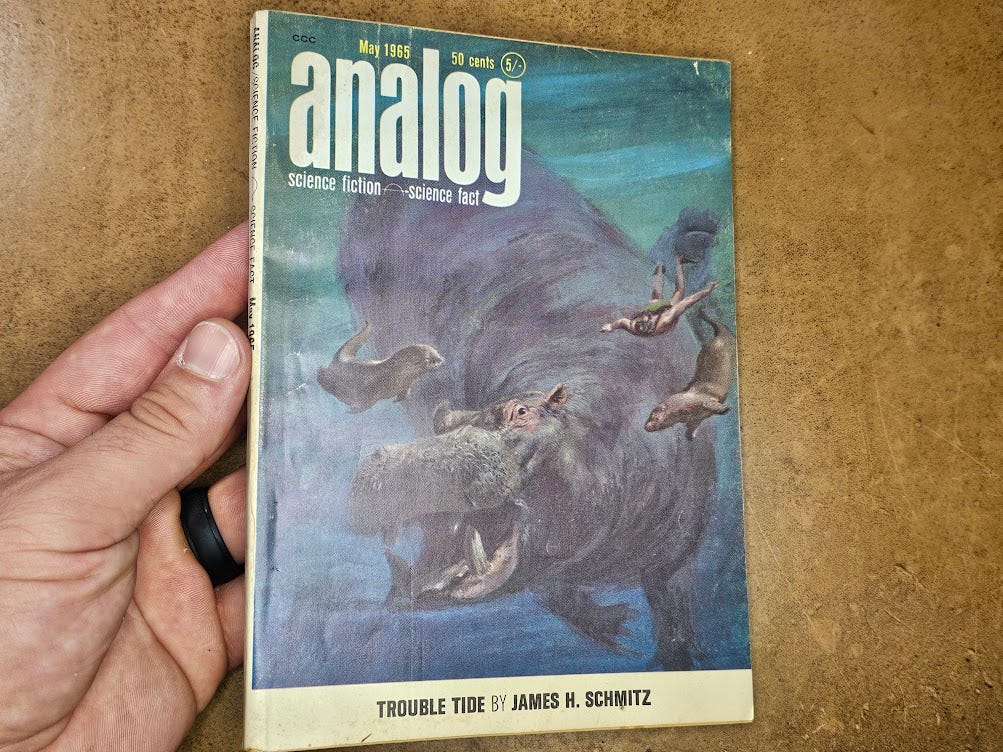
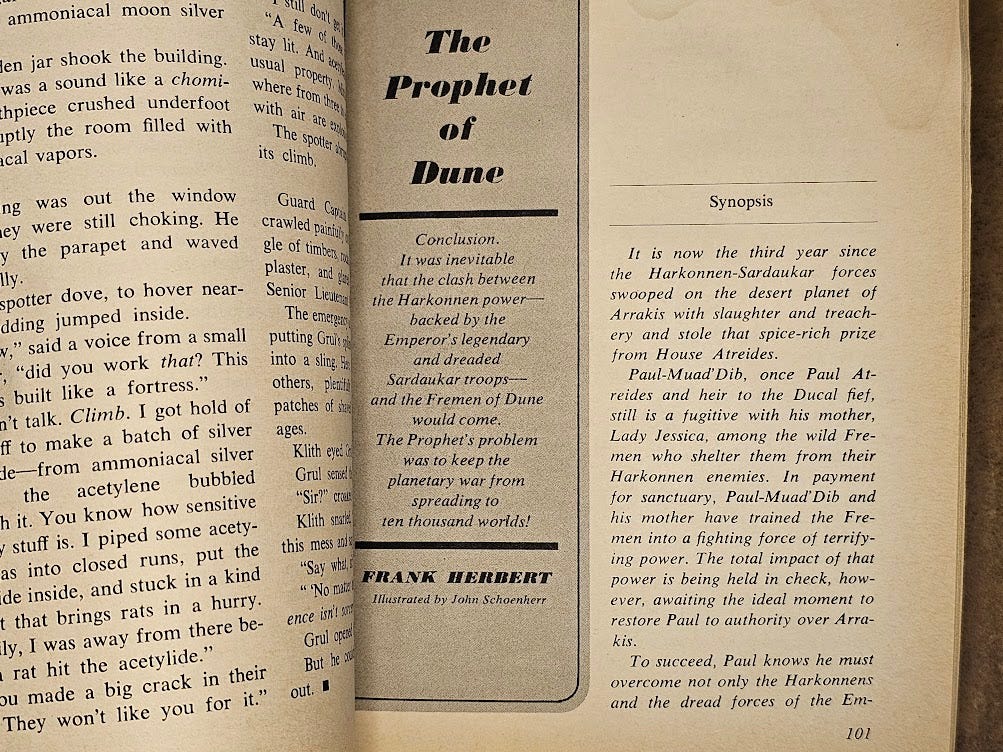

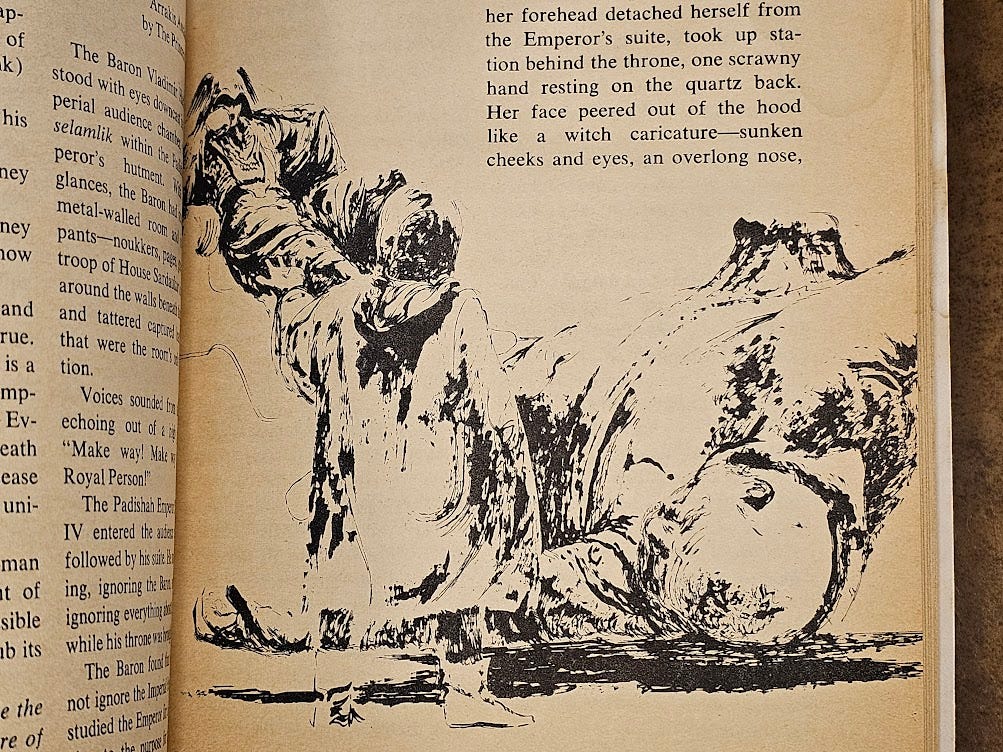
Beautiful!! Please post the other editions that you have !